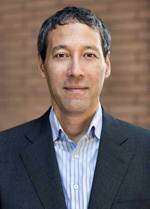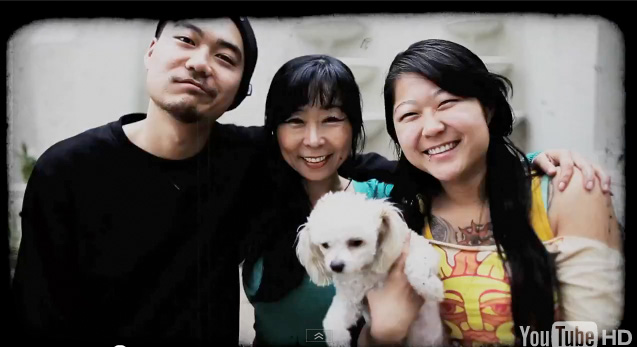 In this 1997 photo, students and residents plant rice in a newly rebuilt rice patty over flood-ravaged farmland in Sugu village, Kujang County, about 90 minutes north of Pyongyang. One local resident at the time admitted to eating plant porridge while trying to overcome the country’s food shortage. Photo credit: Hyungwon Kang
In this 1997 photo, students and residents plant rice in a newly rebuilt rice patty over flood-ravaged farmland in Sugu village, Kujang County, about 90 minutes north of Pyongyang. One local resident at the time admitted to eating plant porridge while trying to overcome the country’s food shortage. Photo credit: Hyungwon Kang
The Food Dilemma
How hungry is North Korea, and how conditional should food aid be? Korea specialist David C. Kang provides an overview of the North Korean food aid quandary.
How bad is the food situation in North Korea?
There is considerable debate about just how bad the situation is. The United Nations’ World Food Program, along with two other U.N. agencies, have released a study concluding that potentially 6 million North Koreans, a quarter of the population, need urgent food aid, citing a harsh winter in which some crops were down 44 percent from expected levels. But even as the World Food Program has launched an international appeal for aid, there are those who oppose such assistance for a variety of reasons. Some argue that the North Korean regime’s behavior should change before any aid is given, while others contend the situation is not so dire, citing evidence that the North Korean military has stockpiled up to 1 million tons of rice, much of it possibly diverted from aid organizations. And still others believe that the regime is simply saving up its food for 2012, when it plans a major celebration for the 100th anniversary of Kim Il-Sung’s birth.
There is, however, evidence that food prices are rising in North Korea and are rising faster than world food prices. This is not only a sign that demand is outstripping supply, but also that the situation in North Korea is not simply a reflection of global food prices. That is, although North Korean elites and the military are unlikely to suffer, some ordinary citizens may be facing severe shortages. In late May, the U.S. sent a fact-finding team to North Korea to assess the situation, and the team’s report is being prepared at this time.
What is the current South Korean and U.S. government stance on providing food aid?
The overall stance of the U.S. government has been one of “strategic patience,” which means ignoring and containing North Korea until it first makes concrete steps to back down from the belligerent behavior of the past few years and to show measures intended to rein in the nuclear weapons program. The U.S. has also not yet made any decision about the humanitarian situation. South Korea’s approach is generally the same: President Lee Myung-bak has eliminated most economic and aid programs to the North until it apologizes for attacking South Korean naval vessel Cheonan and shelling Yeonpyeong Island last year. Within this overall approach, however, there is a willingness to potentially provide humanitarian aid to the North if the situation is dire enough and if the North meets certain preconditions.

Will denying North Korea food aid lead to popular unrest against the government?
In the present situation of nutritional scarcity, it is the youngest and oldest, the weakest and the most politically vulnerable, who will be most directly affected, not the elites. However, a number of North Korean experts have concluded that bottom-up revolt or uprisings are unlikely to occur no matter what the conditions, given the almost complete lack of civil society, institutions, groups or potential opposition leaders in the North that could organize or lead such protests. Furthermore, if there was no revolt during the horrific famine of the mid-1990s, which the most careful scholars estimate killed as many as one million people, it is unlikely that the situation today has changed enough to create conditions that would lead to internal protests against the regime. Rather, the most likely result of putting a utilitarian calculus over a humanitarian calculus is that the regime will survive and that the general population will bear the brunt of the food shortage.
How much food aid actually reaches the general North Korean citizenry and doesn’t get diverted to the military and elites?
The most careful studies estimate that perhaps 25 to 30 percent of aid is diverted, which means that approximately 70 percent of aid reaches the intended recipients. Diversion is deplorable, and ensuring better monitoring would be one of the key negotiation points with the North Korean government. There is no sentiment for simply unloading food in North Korea and hoping for the best, and governments and NGOs can and will bargain hard with Pyongyang over the actual terms of aid.
Does providing humanitarian aid strengthen the regime?
Yes, although perhaps not as much as some fear. It’s true that food and humanitarian aid will likely lessen the budget constraint on the North Korean government. That is, aid can allow the North Korean government to use fewer resources for feeding its people and instead use its resources for other purposes. But it should also be noted that the North Korean regime has proven fairly resistant to outside pressure. In the current situation, it is relatively unlikely that a little more pressure or internal hardship will cause the regime to back down or moderate its policies on the nuclear issue, for example. This is especially true because denying food aid will affect the population and not necessarily the elites.
What are the issues for policymakers in deciding whether or not to provide aid?
The key question for policymakers is whether denying North Korea food aid will increase the possibility of future internal protests or change regime behavior enough to outweigh the immediate humanitarian concerns. Perhaps a more blunt way to characterize the question is: Will letting vulnerable North Korean citizens suffer today weaken the leadership tomorrow? There are other policy questions, as well: What level of aid diversion is too high to justify providing aid? Can the U.S., South Korea and other countries make distinctions between political and humanitarian policies in any meaningful way?
North Korea presents no easy solutions for policymakers in Seoul, Washington, and other capitals, but rather a series of difficult tradeoffs. The “North Korean problem” involves more than simply the security issue, it is also an economic and humanitarian issue. Thus, engagement of some type may have an impact on the current economic and humanitarian issues, but may avoid punishing the regime for its belligerent behavior. “Strategic patience” and pressure is an obvious response to North Korean foreign policy provocations, but it also exacerbates difficulties for the common North Korean people.
No matter what the situation is today, the fact is every year North Korea will be potentially susceptible to a food crisis. The only enduring solution to the hunger issue is for North Korea to enter into the world economy and earn enough abroad through foreign trade so that it can import adequate food supplies. To date, the North Korean regime has been reluctant to fully embrace economic reforms, and is thus annually vulnerable to a potential food crisis.
David C. Kang is director of the Korean Studies Institute at the University of Southern California, and a professor of international relations and business. Along with Victor Cha of Georgetown University, he is engaged in a multiyear project to research problems of Korean unification.
This article appeared in the July 2011 issue of KoreAm.
[ad#graphic-square]








